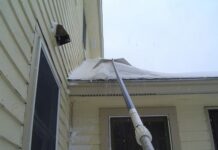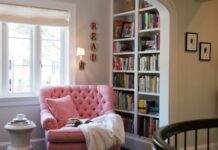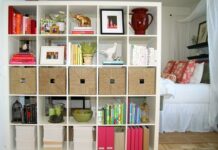By Melissa Rayworth
Design magazines and home decorating catalogs tend to feature sprawling backyards with big wooden decks and room for everything from decorative fountains to artificial ponds.
But few of us have that much outdoor space.
Still, with a few strategic choices, you can create something truly special out of even the smallest yard or porch, said Los Angeles-based designer Brian Patrick Flynn.
Here, he and two other design experts — small-space specialist Kyle Schuneman and landscape designer Chris Lambton — offer advice on the best furnishings, plants and decorating strategies for making the most of a small yard, modest deck or petite patio.
“With a small outdoor space, I really like to think double duty,” said Schuneman, author of The First Apartment Book: Cool Design for Small Spaces (Potter Style, 2012). Look for seating that has hidden storage space inside and tall planters that add privacy.
And choose items that can easily be moved, such as lightweight flowerpots or planters on wheels, said Lambton, host of the gardening design series Going Yard on HGTV. “It’s an easy DIY thing,” he said, to buy an assortment of inexpensive plastic pots and paint them to match your outdoor décor.
If planters are lightweight or on wheels, you can move them to get proper sunlight at different times of day, and rearrange them if you’re entertaining guests and need more space. And, Lambton said, they can be moved inside to a sunny window or doorway when cold weather arrives.
“The easiest way to make small outdoor spaces appear smaller is to fill them with lots of pieces,” said Flynn, founder of the design website decordemon.com.
“Instead, go big with sectionals, or flank perfectly square or rectangular areas with identical love seats or sofas. This not only maximizes the seating potential, but it also keeps the space from becoming too busy or even chopped up. In my outdoor living room, I used a U-shaped outdoor sectional which seats up to seven comfortably.”
When arranging furniture, consider the view: If the home’s exterior is more attractive than the outdoor view, Flynn said, consider positioning seats so that you’ll face your home rather than looking away from it.
All three designers say your choice of plants is especially important when space is limited.
Choose plants with a purpose: “Lavender’s great,” Lambton said, because it’s attractive, easy to grow and deters bugs. Marigolds will also help keep insects away.
Lambton also suggests putting up a trellis as a privacy wall, and planting it with colorful wisteria or climbing hydrangea. Or choose a tall holly or cypress plant in a large planter.
“Holly will be green all year round,” he said, and can help transform an unappealing view.
None of these plants are hard to take care of, Lambton said. “If you’re having coffee in the morning, just go out and dump a little bit of water in.”
Flynn agreed and also suggests using potted grasses, which are “low maintenance and, as they grow, they create a full wall of privacy.”
If you love plants but have minimal space, add a wall-mounted garden filled with succulent plants to one wall, said Schuneman: “It’s a great way to add life and texture without actually taking any real estate up on your small balcony or patio.”
He also suggests using narrow planters to create “long, narrow, raised flower beds that go the length of the space.” They provide room for plants to grow, while also creating a ledge that’s “great for coffee cups or a casual lunch,” he said.
Flynn suggests playing up the height of your space by adding long outdoor curtains or hanging pendant lights.
“I usually paint concrete slabs (on the floor) a bold color or an accent color carried out from an adjacent room,” Flynn said. “This helps the patio feel like an extension when you look out to it through a door. On the flip side, when seated out in the patio looking inward, the consistent use of color flowing inside and outside makes the patio itself feel much more open.”
Flynn also suggests using outdoor curtains for a burst of color, and to block an unattractive view or hide items like electrical boxes and storage bins. “Outdoor draperies are, hands-down, the easiest way to soften an otherwise all-concrete and stucco space, while also being able to control how much or how little neighbors can see.”
Or, he said, order a basic trellis from an online retailer like Hayneedle.com, then “paint it a bold color and use it to instantly make an outdoor space feel more room-like.”
And for a burst of natural color, Lambton suggests adding a small, tabletop fire pit for a golden glow at night. “Some are small enough, and they don’t put off a lot of heat,” he said.
“Most people don’t think of using art outside, but it can be done, especially in a DIY manner,” Flynn said. “My favorite trick is to use tent canvas and stretch it across a DIY frame made from pressure-treated lumber, and add some gesso to the surface for texture.”
Once you’ve created your canvas, he said, “pick up some exterior latex paint, then get as abstract as you want to play with color shape and texture. Once the art is dry, add a sealer to protect it from moisture, then hang it up to create a focal point, and/or add another layer of privacy.” — AP












